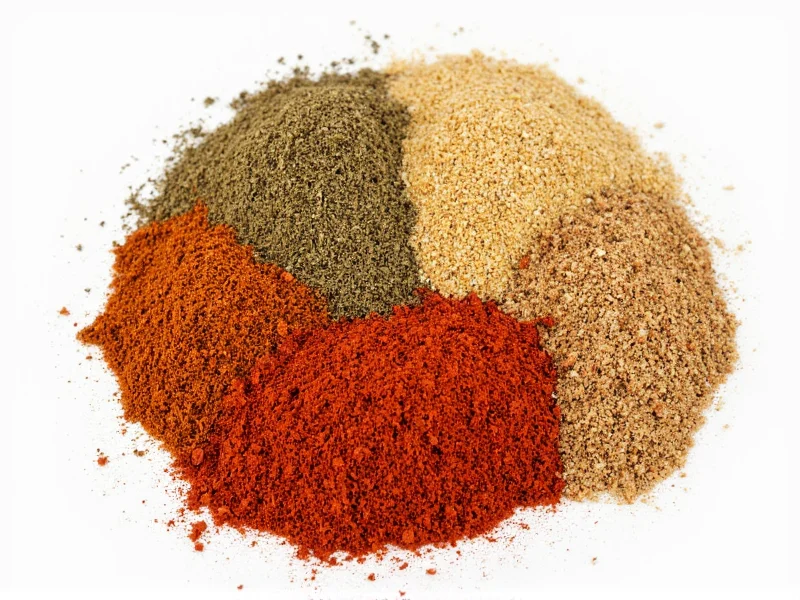Understanding spices like coriander begins with recognizing its dual identity in culinary traditions worldwide. The dried seeds and fresh leaves (cilantro) come from the same plant but serve completely different flavor purposes in cooking. Coriander seeds feature prominently in Indian, Middle Eastern, and Latin American cuisines, while the leaves are essential in salsas, chutneys, and Southeast Asian dishes.
Botanical Background and Forms
Coriander (Coriandrum sativum) belongs to the Apiaceae family, sharing lineage with parsley, carrots, and celery. The plant produces both the spherical seeds used as a spice and the lacy green leaves known as cilantro. When discussing spices similar to coriander seeds, we're specifically referring to the dried, mature seeds rather than the fresh herb.
Coriander appears in three primary forms:
- Whole seeds - Most flavorful when toasted before use
- Ground coriander - Convenient but loses potency faster
- Fresh leaves (cilantro) - Used as an herb, not a spice substitute
Flavor Profile Analysis
Coriander seeds deliver a complex flavor profile that's simultaneously warm, nutty, citrusy, and slightly peppery. When toasted, they develop deeper, almost floral notes. This distinctive combination makes finding perfect coriander spice substitutes challenging, as most alternatives only match one or two aspects of its flavor spectrum.
The chemical composition explains this complexity. Coriander seeds contain linalool (also found in lavender), which contributes floral notes, along with pinene and terpenes that create citrus and pine undertones. This multi-dimensional flavor profile is why many cooks consider coriander irreplaceable in certain recipes.
| Spice | Flavor Similarity to Coriander | Best Substitute For | Limitations |
|---|---|---|---|
| Cumin | Moderate (earthy notes) | Curries, stews, chili | More pungent, lacks citrus notes |
| Caraway | High (nutty profile) | Bread, sauerkraut, rye dishes | Stronger anise flavor |
| Fennel seeds | Moderate (citrus notes) | Mediterranean fish dishes | Sweeter, more pronounced licorice |
| Paprika | Low (color similarity) | Color in goulash, stews | No nutty/citrus elements |
Top Substitutes for Coriander Seeds
Cumin: The Earthy Alternative
While cumin shares coriander's earthy warmth, it lacks the citrus notes and has a more assertive, slightly smoky flavor. Use a 1:1 ratio when substituting in robust dishes like chili or curry, but reduce to ¾ teaspoon cumin per teaspoon of coriander in delicate recipes. This coriander vs cumin flavor profile difference matters most in Middle Eastern and Indian dishes where coriander's brightness balances other spices.
Caraway: Closest Flavor Match
Caraway seeds offer the most similar nutty profile to coriander, though they contain stronger anise notes. They work particularly well in breads, sauerkraut, and Central European dishes. When substituting, use a 1:1 ratio but consider adding a pinch of lemon zest to approximate coriander's citrus element. For those exploring spices similar to coriander for baking, caraway provides the closest approximation.
Fennel Seeds: Citrus Counterpart
Fennel seeds share coriander's citrus undertones but deliver a sweeter, more pronounced licorice flavor. They shine in Mediterranean seafood dishes and certain Indian recipes. Use a 1:1 substitution ratio, but be aware that fennel's sweetness may require balancing with a touch of acid in some recipes. This makes fennel an excellent choice for coriander substitutes in fish recipes.
Culinary Applications and Pairing Strategies
Understanding when to use coriander versus its substitutes requires knowledge of regional cooking traditions. In Indian cuisine, coriander forms the base of most curry powders, pairing perfectly with cumin, turmeric, and chili. When substituting in these blends, maintain the 2:1 coriander-to-cumin ratio traditional in garam masala.
For Mexican cooking, where fresh cilantro dominates, consider these spice alternatives to coriander leaves:
- Parsley with a squeeze of lime for garnish
- Epazote in bean dishes
- Culantro (longer-lasting than cilantro)
Professional chefs often create custom blends when coriander is unavailable. A reliable coriander replacement spice mix combines equal parts cumin, fennel, and a pinch of allspice, toasted and ground fresh. This blend captures coriander's complexity better than any single substitute.
Storage and Usage Best Practices
To maximize flavor from coriander and its substitutes, proper storage and preparation matter. Whole coriander seeds maintain potency for 1-2 years when stored in airtight containers away from light, while ground coriander loses flavor within 6 months. Always toast whole seeds in a dry skillet for 1-2 minutes before grinding to release essential oils.
When substituting spices, consider these professional tips:
- Add substitutes later in cooking than coriander (they often have stronger flavors)
- Start with 75% of the recommended amount and adjust to taste
- Combine two substitutes (like cumin + fennel) for more complex results
- Always toast whole spices before grinding for maximum flavor extraction
Nutritional Comparison
While primarily used for flavor rather than nutrition, coriander and its substitutes offer modest health benefits. Coriander seeds contain dietary fiber, iron, and manganese, with traditional uses in digestion support. Cumin provides more iron, while fennel offers higher vitamin C content. These differences rarely impact culinary decisions but may matter for those seeking healthy spice alternatives to coriander for specific dietary needs.
Conclusion: Mastering Spice Substitutions
Successfully working with spices like coriander requires understanding both their individual characteristics and how they interact in dishes. No single substitute perfectly replicates coriander's unique combination of nuttiness, citrus, and warmth, but strategic combinations can achieve satisfactory results. The key is recognizing which aspect of coriander's flavor matters most for your specific recipe—whether it's the earthiness for a stew, the citrus notes for fish, or the floral quality for baked goods.











 浙公网安备
33010002000092号
浙公网安备
33010002000092号 浙B2-20120091-4
浙B2-20120091-4